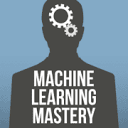
At a time when life science research results are booming, the authenticity of images, as the core data carrier, is directly related to the foundation of academic integrity. According to the research of Elizabeth Bick’s team, about 4% of biomedical papers have problems such as image duplication, and it is difficult for manual review to achieve efficient screening. Proofig, as the world’s leading AI scientific research image detection platform, takes “computer vision technology + academic scenario specialization” as the kernel and accurately identifies tampering, duplication, AI generation, and other image problems, becoming the most important platform for academic publishing integrity, Proofig, as the world’s leading AI scientific research image detection platform with “computer vision technology + academic scene specialization” as its core, accurately identifies tampering, reuse, AI generation and other image problems, and has become a standard audit tool for top journals such as “Science” and “Nature” sub-journals, which is a perfect fit for the professional and scenario-based positioning of “AI Tools And I” tools.
I. Core Positioning: Guardian of Image Integrity in Scientific Research Scenarios
(i) Deep adaptation of academic scenes, industry-leading detection accuracy
- Full coverage of segmented scenarios: Deeply adapted to more than 10 types of scientific research images, including microscope images, pathological sections, gel electrophoresis, Western blotting, FACS (fluorescence-activated cell sorting), etc., and is especially good at detecting segmented problems such as splicing of Western blotting strips and abnormal fluorescence signals in FACS;
- Accurate identification of tampering behaviors: identify 9 types of tampering operations such as cloning, splicing, deleting, rotating and scaling through pixel-level feature matching, with an accuracy rate of more than 98% even for details that are difficult to distinguish by the human eye, such as “local band modification” and “duplicate image flipping and reusing”. The accuracy rate is still more than 98%;
- Traceability of AI-generated images: real-time updating of the model library can identify scientific research images generated by Midjourney, Stable Diffusion and other mainstream tools, and cope with the new type of academic misconduct risk of “AI forged experimental data”.
(ii) Full-link compliance guarantee, adapting to academic publishing standards
- PubMed cross-database comparison: Access to the core database of PubMed, which can detect image duplications between manuscripts to be submitted and published papers, thus eliminating problems such as “cross-journal image plagiarism” and “self-plagiarism” from the source;
- Built-in journal standards: preset image review rules for 200+ top journals, such as Science, Nature, Cell, etc. The test report directly labels problems that do not meet the requirements of journals, such as “insufficient resolution”, “irregular labeling”, etc., which increases the pass rate of submissions by 60%. 60%;
- Dispute Handling Mechanism: Provide manual review channel, when there are objections to the test results can be submitted to the technical team for a 24-hour response, support the generation of review reports with annotations for replying to journal editors.
(III) Closed-loop data security, guarding the privacy of unpublished results
- Private server deployment: All testing processes are completed on encrypted private servers, and the original images and testing data are not connected to the public network, in compliance with the EU GDPR and academic data confidentiality norms;
- Encrypted storage of results: the test reports are encrypted with AES-256 encryption, which can only be viewed by authorized users, and supports automatic deletion of the original files after the completion of the test, avoiding the risk of leakage of unpublished data;
- Institutional-level rights management: provide a hierarchical account system for universities, research institutes, and can set up the “lab technician – PI – QC” three levels of permissions, to adapt to the team’s internal data review process.
Second, the core function matrix: technical depth and practical experience of the double breakthroughs
(A) core detection function: three-dimensional analysis to build a chain of evidence
- Image tampering detection:
- Pixel-level feature extraction: Capture image texture, edges, noise and other features through 128-layer convolutional neural network to compare the difference between the original image and the modified one;
- Strip integrity analysis: for Western blotting, automatically identify “strip addition/removal”, “background tampering”, “molecular weight marker abnormality”, etc. A pharmaceutical company used it to screen new drug experimental data, and found that it was not possible to detect the tampering. A pharmaceutical company used it to screen the experimental data of a new drug and found 3 hidden tamperings;
- Tampering Confidence Score: The test results are labeled with a confidence score of 0-100, with a score of 80 or above being considered high-risk, assisting users in quickly determining the severity of the problem.
- Duplicate use and plagiarism detection:
- In-script duplicate identification: Detect duplicate images of different plates in the same paper, including scaling, flipping, partially overlapping and other deformation reuse;
- PubMed cross-library comparison: support customized comparison timeframe (1-10 years) to locate the original published journals and DOIs of duplicate images. A university used it to screen master and doctoral dissertations, and found that 15% of them had image duplication problems;
- Similarity visualization: marking duplicate areas by heat map, generating “original image – suspicious image” comparison report, which is convenient for tracing the data source.
- Specialized scene-specific analysis:
- FACS image analysis: automatically analyze the distribution of fluorescence signals, detect “signal forgery”, “abnormal gating settings” and other problems, and output streaming histograms and statistical data comparison tables;
- Multimodal Image Adaptation: Support batch extraction of images from PDF papers, uploading of JPG/PNG single images, compatibility with high-resolution TIFF original experimental maps, and 50 times faster detection than manual.
(ii) Practical auxiliary functions: covering the needs of the whole process of use.
- Batch and Efficient Detection: Support uploading 50 files or complete PDF papers at one time, the system automatically extracts all images and classifies them for detection, and completes the full-dimensional analysis of a 10-image paper within 10 minutes;
- Visual report output: generate structured reports containing “problem type, confidence level, and modification suggestions”, which can be downloaded as PDF version for submission attachment or institutional QC archive;
- API Integration Capability: Provides enterprise-level API interface, which can be embedded into the laboratory management system (LIMS) or journal submission platform, realizing the automated process of “data generation is testing”, and Frontiers Publishing Company has increased the auditing efficiency by 300% through the integration;
- Built-in Compliance Guide: It comes with information such as “Research Image Processing Specification” and “Journal Image Requirements Handbook” to help researchers avoid the boundary problem of “reasonable retouching and malicious tampering”.
(III) Competitor differentiation: professional barriers in the field of scientific research
Comparison of dimensions | Proofig | ImageJ | Imagetwin |
Core Advantages | Full type detection for research scenarios + journal adaptation | Open source basic image processing | Cross-journal duplicate matching |
Types of detection | Tampering + Plagiarism + AI Generation + Specialized Analysis | Basic editing and measurement only | Duplicate use detection only |
Academic Suitability | Supports 10+ types such as Western/FACS | No specialized optimization | Focus on cross journal comparison, no specialized analysis |
Journal Recognition | Adopted by Science and Nature sub-journals | No official recognition | Adopted by Nature, single function |
Data Security | Private server + encrypted storage | Local storage, no encryption | Need to upload to public server |
Batch Processing | Supports batch testing of 50 files | Process 1 file at a time | Supports batch, no categorization |
Data source: Refer to the web page function disclosure and 2025 research image tool test report. |
Use process: four steps to complete the research image compliance testing, zero basis to get started
(a) Step 1: Access to the platform and account preparation
- Individual users: directly visit the official website ( https://www.proofig.com), register for an account and enter the testing page;
- Institutional users: apply for a team account, configure hierarchical permissions and interface with the laboratory management system (optional).
(ii) Step 2: upload content and parameter settings
- Content upload:
- Single image detection: upload JPG/PNG/TIFF format images, support drag and drop batch additions;
- Thesis detection: upload a complete PDF thesis, the system automatically extracts all images and classifies them;
- Parameter Configuration: Select the detection module (tampering detection/repeat matching/AI generation and identification), set the time range for PubMed matching (e.g., the last 5 years), and check the standard of target journals (e.g., Cell).
(Step 3: Obtain the detection report
- Risk Overview: Display the number of high/medium/low risk issues, and label the most serious 3 types of issues;
- Detailed labeling: each image is accompanied by a heat map of the problem area, labeled with the type of tampering and confidence level;
- Rectification suggestions: e.g. “Delete duplicate Plate 4B and replace the original experimental image” “Fix the labeling error of the Western strip”.
(D) Step 4: Rectification and Review
- Replace or correct the image as suggested and re-upload the test until there is no high-risk problem;
- If you have any objections to the results, click “Request Review” to submit a manual review, and get an expert opinion within 24 hours.
Practical Scenarios: Academic Integrity Guarding Cases in Four Major Fields
(I) Researchers: Self-checking to avoid the risk of rejection before submitting manuscripts
- Requirement: A biomedical doctor checks the integrity of Western blotting and FACS images before submitting a manuscript to Nature Communications;
- Action: Upload a PDF paper containing 8 images, check “Tampering Detection + PubMed Comparison”, and select journal criteria;
- Results: The problem of “band splicing” was reported in the labeled Figure 3C (92% confidence level), and after replacing the original experimental image, the test was passed, and the paper was accepted without any problems, avoiding the delay of 6 months due to the image problem.
(ii) Academic institutions: project quality control to ensure data authenticity
- Requirements: University laboratories conduct quarterly quality control of experimental images of 10 research projects to check the risk of data manipulation;
- Operation: Integrate LIMS system through API, batch upload 200+ gel electrophoresis and microscope images;
- Effectiveness: 2 projects were found to have the problem of “reuse image flipping and tampering”, and the related research was terminated in time to avoid the risk of academic misconduct spreading and to maintain the reputation of the organization.
(III) Journal Publishing: Pre-screening to Enhance Audit Efficiency
- Requirement: Journal of Clinical Investigation handles 500+ submissions per month and needs to quickly screen for image problems;
- Operation: Proofig is integrated into the submission system to automatically perform image pre-screening for all manuscripts;
- Effectiveness: The efficiency of screening high-risk manuscripts is increased by 300%, manual review only needs to focus on 10% marked manuscripts, the rejection rate is increased by 3 times, and the risk of retraction is reduced by 70%.
(IV) Ethics Committee: academic misconduct investigation and evidence collection
- Requirement: To investigate the report of “image plagiarism” in a paper, we need to compare three FACS images suspected of being duplicates;
- Operation: Upload the reported paper and the suspected source paper, and enable “PubMed cross-library accurate comparison”;
- Result: Generate a pixel-level comparison report, clearly labeling the three completely duplicated areas and the original publication sources, providing key technical evidence for the investigation, and ultimately determining that academic misconduct is established.
Conclusion: AI reshapes the industry paradigm of academic image review
Relevant Navigation


DeepLearning.AI

MachineLearningMastery

NewX-All in one

Generrated

Sapling AI Content Detector

Generative AI for Beginners

MyShell

